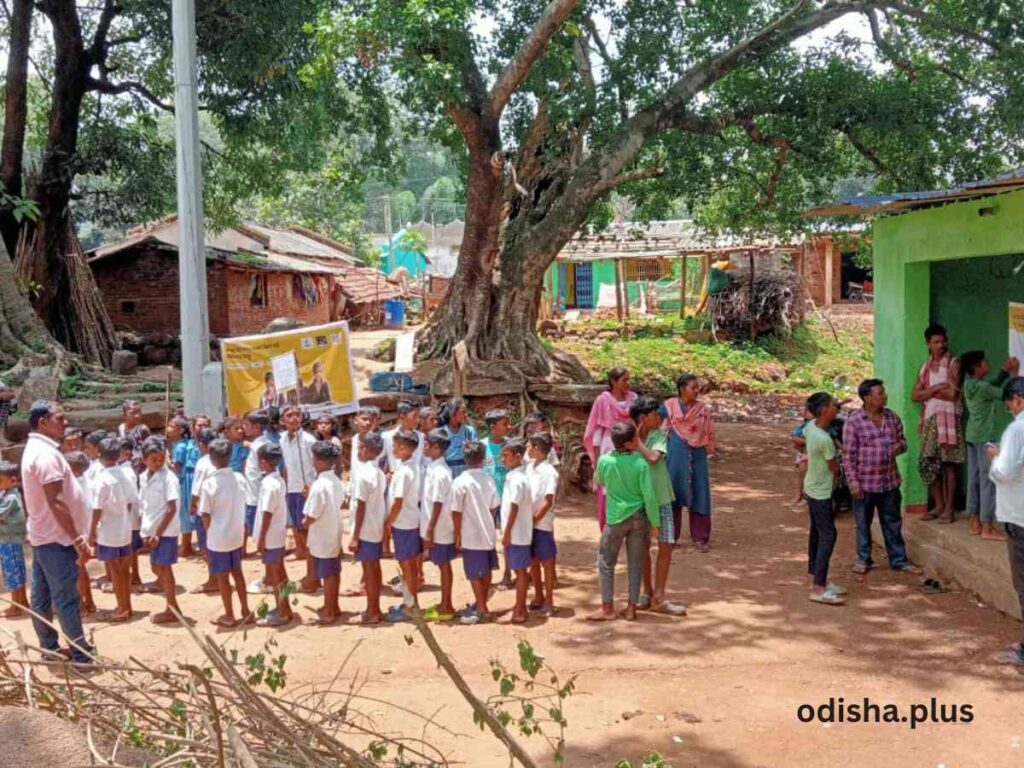When girls go on to complete their education, they are more likely to become financially independent, contribute to the financial stability of their families’ and invest in their own children’s education
Trina Chakrabarti

Around 10 years ago, a 7-year-old girl from the hinterlands of Koraput, Odisha, sat at the doorstep of her mud-house, tears streaming down her cheek. She was ailing, burdened by household chores and tired out by frequent bouts of illness. Her mother Saita, an ASHA worker, kept busy with her responsibilities in the community and found little time to look after her daughter. Her father, a casual labourer, used to be away from home for most of the times, in search of a living. The child had very few friends that she could mingle with and her interest in studies was dissuading with each passing day.
The Journey…
Members of SPREAD, a local non-profit and a partner organization of CRY, noticed Manjula during a visit and convinced her mother to let the 7-year girl join a children’s group in the village. Although hesitant at first, the girl started enjoying the sessions. There was nothing special about these sessions except that here, all the children, including Manjula, found a vent to their feelings. They laughed a lot, learnt a little, took part in fun activities and attended with enthusiasm.
Such sessions with the children, most of whom are aged below 10, help not only in breaking the ice, but also making them aware of their basic rights as children, teaching them about health and hygiene practices and educating them about serious issues such as child marriage and child labour through simple tales. At these sessions, children are also encouraged to attend school and get their mid-day meals regularly.
Through her years as a member of the children’s group, Manjula was learning and growing up and the change in her mindset was obvious. Her mother Saita was quick to notice the transformation. “Previously my daughter used to keep to herself and not mingle much. But when she started attending the children’s group sessions, she became a much happier child,” says the ASHA worker.
When Manjula turned 11, SPREAD volunteers made her join the adolescents’ collective in the village. This time, the girl was more than eager to join in. Gone was the shy reticent 7-year-old who feared people and peers. Manjula was confident, spirited and keen at that time to take up initiatives as a collective member. By now a devoted student, she lapped up the opportunity when the team enrolled her in a high school 5 kms away. Managing household chores and completing school lessons, it was a tough balancing act, but Manjula was determined to pursue her studies.
Over the next few years, community workers, family members and friends were astonished to see how well Manjula managed her household work, studies and her responsibilities. She took part in health initiatives, and worked hard to spread awareness about hygiene practices during menstruation and the importance of eating good food and taking iron supplements.
Manjula cleared her Matriculation exam 2 years ago and with the help of the team, got admitted in a Block-level college, 25 kms far from her village. Every day for the past two years, she walked for 4 kms to the nearest bus stop, and took a bus to reach her college. Among the subjects she studied with passion are Political Science and Economics.
“I want to be an Economics Professor someday,” she told her friends with determination. Her diligence paid off when she finally cleared her Class XII boards this year with decent marks and got admitted in Government Women’s College, in Jeypore. At present, she stays at a rented place near the college along with four other students, to cut down on the daily commute time.
The Transformation
As Manjula dreams of a secure and stable future, with her personality and perspectives evolving accordingly, it is worth acknowledging the role of education in transforming her. The enthusiasm and confidence with which she approaches her responsibilities makes her stand out in the crowd, a fact that her mother is happy to share. “Often, we find that teenage girls prefer to remain silent about the problems they face during menstruation. Manjula works hard to break this culture of silence by encouraging the girls to speak out and share. She is trying to aware people in the community of alcohol addiction & also run campaigns for a kitchen garden in every household at her village and nearby,” says the proud mother.
Looking Ahead
As the country strides boldly towards 100 years of independence, there are myriad benchmarks of development and glory in diverse fields that we can boast of. But intertwined within the bright spots, are issues that need a relook, areas that can be worked upon. While the underscored debate on girls’ and women’s empowerment across the country has led to a spike among girls in chasing and achieving their dreams. Still, there remain many who are yet to start off the block.
As per the latest data by Unified District Information System for Education (UDISE+) 21-22, only three of every five girls in India make it to the higher secondary level of education. In Odisha, the drop-out rate for girls at the secondary level is 27.29 percent, significantly higher than the national drop-out average.
Manjula has moved on to college, but across the length and breadth of this vast country, some families don’t realize the importance of educating their girls. It’s not merely a case of a girl completing her studies and growing individually. This benefits the community, also the society and nation as a whole. How? The answer is simple. Education for girls is the most powerful tool for breaking the inter-generational cycle of poverty.
When girls go on to complete their education, they are more likely to become financially independent, contribute to the financial stability of their families’ and invest in their own children’s education. Educated girls can take their decisions independently about their lives, health, hygiene, nutrition, and family planning. Much like Manjula, they challenge stereotypes and inspire others to pursue education. Increased girls’ education drives societal change, advancing gender equality.
As a child rights practitioner, I feel creating awareness about the importance of girl child education is the obvious first step. We have recently launched a campaign, ‘Poori Padhai Desh ki Bhalai’, that emphasizes that higher secondary education for girls is non-negotiable for their empowerment and the nation’s development.
Targeted interventions with specific goals and action points are needed to support girls beyond elementary education. This includes adequate public provisioning for girls’ education, financial incentives, improved infrastructure, community engagement and robust enforcement of laws against child marriage. But none of these are possible without generating mass awareness and a social resonance around girls’ education.
“A decade ago, life had all but come to a stop. Today, I stand on the threshold of a career and a stable future. Education has helped me recognize my potential. I want to be a college professor after I complete my studies. I want to teach young girls to study hard and dream big. When girls complete their education, the nation thrives,” Manjula signs off with a confident smile.
We couldn’t agree more!
(Trina Chakrabarti is the Regional Director, CRY [East]. Views expressed are personal.)

























